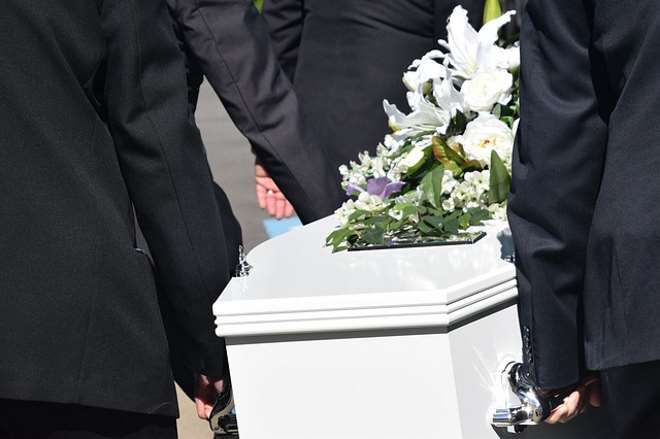The Truth About Cremation in 2025: Process and Costs
Cremation has become an increasingly chosen option in 2025, but many still don’t fully understand how the process works or what’s actually involved. From preparation to final memorial choices, today’s cremation services offer more flexibility than ever. Here’s what families need to know before making this important decision.

What Is the Cremation Process in 2025?
The cremation process in 2025 remains fundamentally similar to previous years, but with enhanced efficiency and environmental considerations. The process typically begins with the identification and preparation of the deceased. The body is placed in a cremation container or casket made of combustible materials. It is then moved to the cremation chamber, also known as a retort.
Modern cremation chambers use high-temperature heat (usually between 1,400 to 1,800 degrees Fahrenheit) to reduce the body to bone fragments. This process typically takes two to three hours, depending on factors such as body size and the type of container used. After cooling, the remaining bone fragments are processed into a fine, sand-like consistency, which is what families receive as “ashes.”
What Are the Modern Cremation Options and Urn Selection?
In 2025, families have a wider range of cremation options than ever before. Traditional cremation remains popular, but alternatives like water cremation (also known as alkaline hydrolysis) are gaining traction due to their lower environmental impact. This process uses water, heat, and alkaline chemicals to break down the body, resulting in a similar end product to flame-based cremation.
When it comes to urn selection, the choices are vast and personalized. Traditional urns made of materials like wood, metal, or ceramic are still common. However, there’s a growing trend towards eco-friendly options such as biodegradable urns for sea or land burial. Digital memorial urns, which incorporate technology to display photos or videos of the deceased, are also becoming more prevalent.
What Should Families Know About Cremation Planning?
Planning for cremation involves several key considerations. First, it’s important to understand that cremation can be arranged directly through a crematory or as part of services offered by a funeral home. Many people choose to pre-plan their cremation, which can ease the burden on family members and potentially lock in current prices.
Families should also be aware of legal requirements, which may vary by state. Generally, a death certificate and cremation authorization form signed by the next of kin are required. It’s also crucial to decide on the final disposition of the ashes – whether they will be kept, scattered, or interred in a columbarium.
How Long Does Cremation Take and What’s Returned?
The entire cremation process, from the time the deceased is brought to the crematory to when the ashes are returned to the family, typically takes 7-10 days. However, the actual cremation itself usually lasts 2-3 hours. The cooling and processing of the remains add a few more hours to this timeframe.
Families receive the processed cremains, often referred to as ashes, which typically weigh between 3-7 pounds for an adult. These ashes are usually returned in a temporary container unless a specific urn has been selected. It’s important to note that any non-combustible items, such as metal implants or jewelry, are removed before the ashes are processed and can be returned to the family if requested.
What Are the Cremation Costs and How Do Providers Compare?
Cremation costs can vary significantly based on location, services chosen, and the provider. Generally, cremation is less expensive than traditional burial, but prices have seen some increases due to rising operational costs and inflation.
| Provider | Basic Cremation | Full-Service Cremation |
|---|---|---|
| National Cremation | $1,500 - $2,500 | $3,000 - $4,500 |
| Neptune Society | $1,800 - $3,000 | $3,500 - $5,000 |
| Local Funeral Homes | $1,000 - $3,500 | $2,500 - $6,000 |
| Green Cremation Providers | $1,200 - $2,800 | $3,000 - $5,500 |
Prices, rates, or cost estimates mentioned in this article are based on the latest available information but may change over time. Independent research is advised before making financial decisions.
Basic cremation, also known as direct cremation, typically includes the cremation process, a simple container, and return of the ashes. Full-service cremation often includes transportation, a viewing or ceremony, and sometimes an urn or other memorial products.
When comparing providers, consider not just the cost but also the range of services offered, the facility’s reputation, and their ability to accommodate any special requests or cultural needs. Some providers offer package deals that can be more cost-effective than arranging services separately.
In conclusion, cremation in 2025 offers families a range of options to honor their loved ones. From the basic process to modern alternatives and personalized urns, there are choices to suit various preferences and budgets. By understanding the process, planning considerations, timeframes, and costs associated with cremation, families can make informed decisions during a difficult time. Remember that while cost is an important factor, the quality of service and the provider’s ability to meet your specific needs should also be key considerations in your choice.




